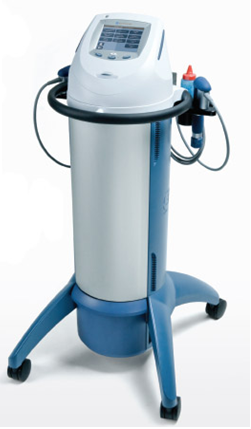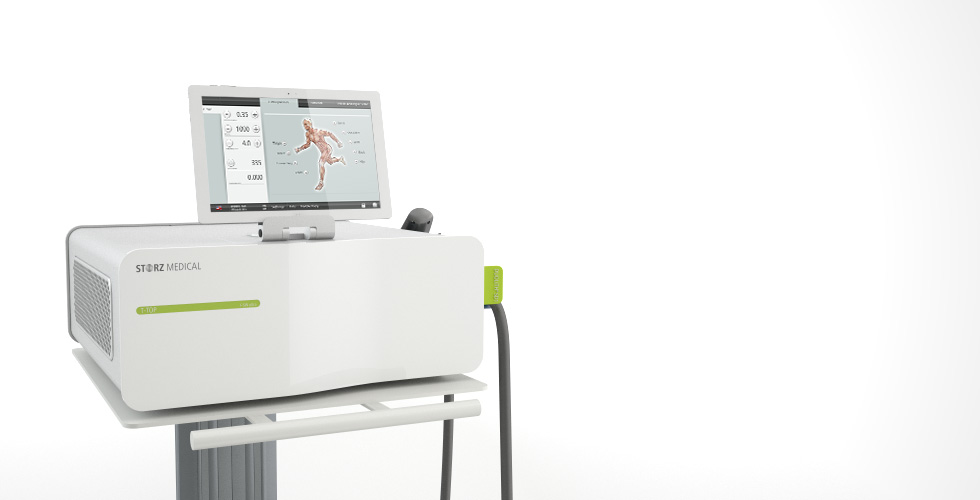Radial Shockwave Therapy

What is it and what does it do?
Shockwaves accelerate the healing process by activating the body's self-healing powers, particularly in cases where the body has been unable to do it on its own. It stimulates metabolism and enhances blood circulation which enables damaged tissue to regenerate and eventually heal. The treatment relieves pain by producing an analgesic effect on the treatment area.
Healing occurs over several treatment by initiating an inflammatory response and ultimately vascularization of the area. The high-energy acoustic waves that are transmitted through the surface of the skin are spread radially (spherically) into the body and the body responds with increased metabolic activity around the area of the pain. Shockwave therapy is especially effective in the treatment of myofascial trigger points.
What conditions can be treated with Radial Shockwave Therapy?
Shockwave therapy can be used to treat a wide variety of musculoskeletal conditions, in particular those involving areas where major connective tissue attaches to bone.
Some common sites that can be successfully treated are:
- Foot: Plantar Fasciitis, Heel Spurs, Achilles Tendinitis, Morton's Neuroma, Metatarsalgia;
- Knee: Patellar Tendinitis, Jumper's Knee, Shin Pain, Runner's Knee;
- Elbow: Tennis and Golfer's Elbow (Medial and lateral Epicondylitis);
- Shoulder: Rotator Cuff Tendinitis (acute and chronic), calcium deposits;
- Hip: Trochanteric Bursitis;
- Muscles: Myofascial Trigger Points;
- Bones: Stress Fractures, Non-Unions (delayed bone healing);
- Muscle tears: Hamstrings;
- Neck, Shoulder, Arm pain (cervicobrachialgia);
- Lumbalgia, Pseudoradicular lumbosciatica.
How many treatments are needed and what is the success rate?
Most conditions require at least 3 sessions that can go for 5 to 20 minutes. The treatments are usually set 4 to 10 days apart. The reported rate of success with shockwave therapy is between 77%-80% after just 2 to 3 treatments.
If Radial Shockwave therapy treatment doesn't work for you, other modes of therapy and treatment should be considered and proper referrals made.
Does the treatment hurt?
There may be some discomfort during each treatment, however most patients are able to tolerate the pain. The intensity of the shockwaves can also be adjusted during the treatment to make it more tolerable.
It is most common for patients to feel immediate relief of pain. However, within the first 2 to 4 hours after the treatment, patients may experience some soreness over the treatment area.
If soreness is experienced DO NOT use ice or anti-inflammatory medication as this counteracts the desired inflammatory response induced by the treatment. Using Tylenol for the pain usually helps to decrease soreness without preventing the inflammatory response brought on by the treatment. Moist heat may be used as well.
What should or shouldn't be done after the treatment session?
Up to 48 hours after Shockwave therapy has been done is best not to do any physical activity that is going to be strenuous on the body, as least for the body part that was treated.
Contraindications/Precautions:
- Cortisone injections with one month prior to start of shockwave treatment;
- Blood thinning medications such as Coumadin or Heparin;
- Heart or circulatory problems;
- Cancer in or around the treatment area;
- Pregnancy;
- Diabetes;
- Acute inflammation in treatment area;
- Nerve or blood supply being close to the treatment area.

